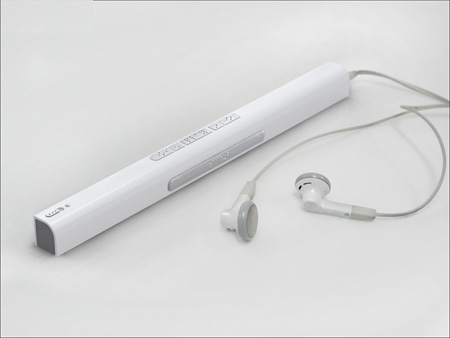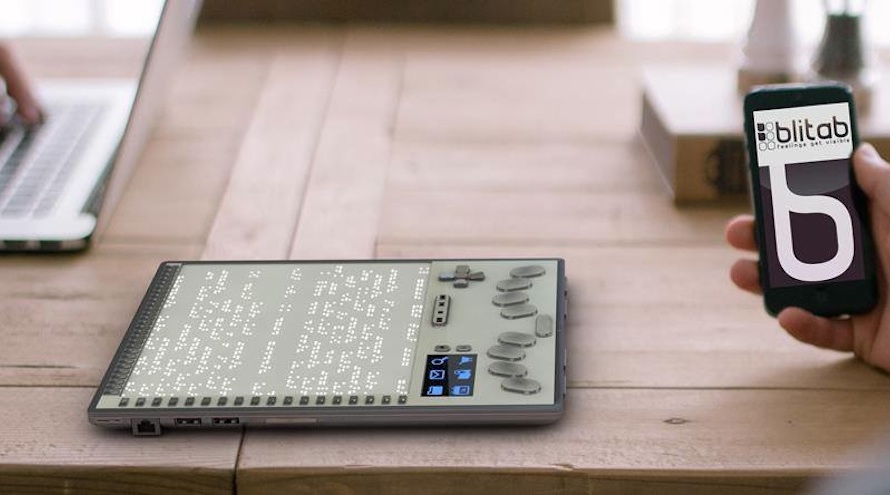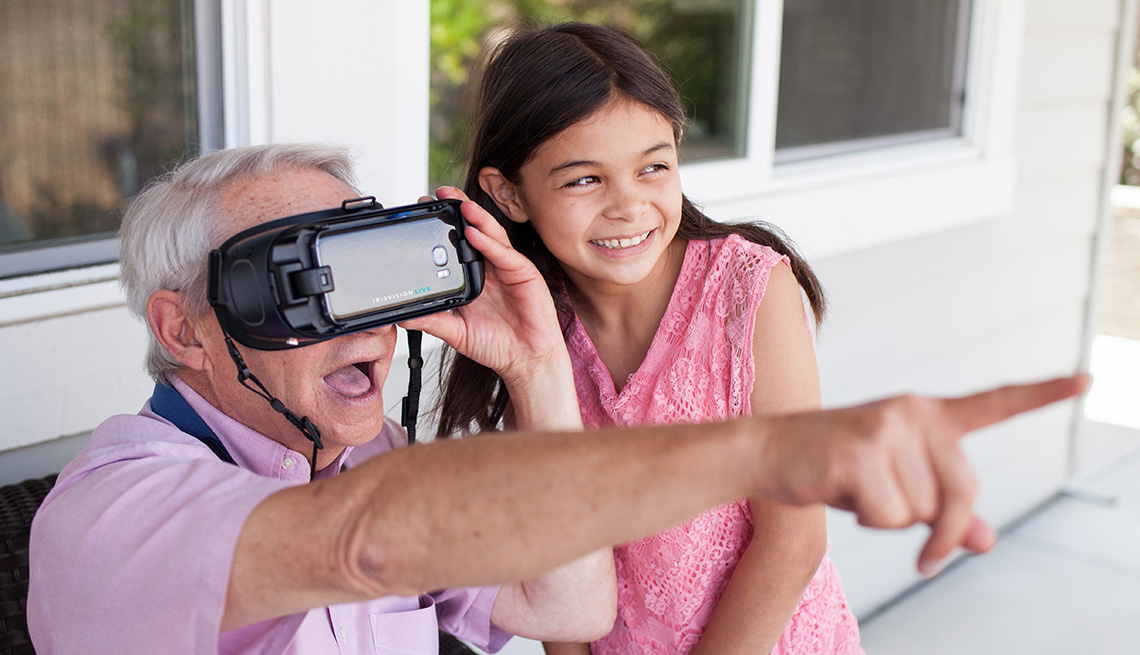Discover Ingenious Tools Developed for the Visually Damaged
The advancement of innovative tools for the visually damaged stands for a considerable improvement in availability and self-reliance. Technologies such as smart glasses with AI capabilities and mobile applications made to supply auditory summaries are improving daily experiences for individuals. Additionally, wearable tools that use haptic feedback improve ecological understanding, while modern Braille advancements use new means to engage with message. As these tools proceed to evolve, their influence on the lives of those with visual impairments increases important concerns regarding the future of inclusivity and autonomy in different elements of life. What lies ahead in this technological landscape?
Smart Glasses for Navigation

Smart glasses created for navigating are reinventing the method aesthetically damaged people communicate with their setting. These innovative devices utilize a mix of camera technology, expert system, and acoustic comments to provide real-time details about environments. By using challenge discovery systems, wise glasses can signal individuals to potential risks, enabling safer movement in both unfamiliar and acquainted settings.
The assimilation of GPS innovation further boosts navigation capacities, permitting individuals to receive auditory directions as they relocate. This hands-free strategy not only fosters freedom however also equips aesthetically damaged people to navigate metropolitan landscapes with increased self-confidence. In addition, several wise glasses are equipped with functions that recognize sites and road signs, providing contextual info that enhances the user experience.
In addition, the development of these gadgets is constantly progressing, with companies working to enhance the precision of item acknowledgment and expand the range of navigational attributes. As smart glasses become much more easily accessible and budget friendly, they hold the possible to dramatically transform every day life for visually impaired users. Ultimately, these ingenious devices stand for an essential action towards inclusivity, offering boosted flexibility and a better feeling of autonomy for individuals browsing the globe around them.

Mobile Apps for Daily Living
Just how can mobile applications enhance the daily lives of aesthetically impaired individuals? Mobile applications are revolutionizing the method aesthetically impaired individuals navigate their settings, take care of everyday jobs, and access details. These applications offer essential support via numerous functionalities, promoting self-reliance and boosting quality of life.
Several cutting-edge mobile apps are created especially for day-to-day living. For example, applications like Be My Eyes connect visually impaired individuals with sighted volunteers by means of video clip telephone calls, permitting them to get real-time help with jobs such as reviewing labels or navigating unfamiliar spaces. In A Similar Way, Seeing AI, established by Microsoft, uses expert system to describe surroundings, read text, and determine items, efficiently transforming a smartphone right into an effective tool for everyday support.
Furthermore, navigating apps tailored for the aesthetically impaired, such as Aira and BlindSquare, offer audio-based instructions and environmental details, making it possible for customers to traverse their surroundings securely and with confidence. Past navigating and instant assistance, mobile applications also support organization and job administration, with features that assist individuals establish pointers, create to-do lists, and track appointments. In recap, mobile applications offer as crucial resources, encouraging visually damaged people to lead more independent and satisfying lives.
Wearable Technologies for Aid
Empowerment through technology is progressively obvious in the realm of wearable gadgets developed to aid aesthetically impaired people. These cutting-edge tools incorporate seamlessly into life, boosting navigation and supplying important feedback to individuals. Smart glasses geared up with cams can acknowledge faces and check out message aloud, permitting users to communicate more confidently in social and expert settings.
Another noteworthy improvement is the use of haptic feedback systems in wearable tools. These systems use resonances or various other responsive signals to share details concerning the user's environment, such as obstacles or adjustments in surface, enhancing mobility and security. Wearable modern technologies additionally consist of wristbands that attach to smart devices, signaling customers to alerts with subtle vibrations, thus enhancing connectivity without dependence on aesthetic cues.
As these modern technologies remain to progress, they are not only boosting freedom for visually damaged people however additionally cultivating a greater sense of inclusion in culture. By connecting the space between challenges faced in day-to-day living and the possibility for freedom, wearable innovations serve as pivotal devices in the pursuit for equal rights and empowerment for those with aesthetic impairments.
Sound Summary Tools
Sound description tools play an essential role in improving availability for visually impaired people, providing them with the ability to involve with fyi eye doctors aesthetic media. OCR devices for the blind. These devices use narrated descriptions of vital aesthetic elements in movies, television shows, and live performances, guaranteeing that users can totally understand the context and emotions conveyed with visuals
Audio description can be incorporated right into numerous systems, consisting of streaming solutions, cinema screenings, and live cinema. Several preferred streaming services currently include audio summary as an access feature, permitting viewers to choose it conveniently. Along with conventional media, specialized applications also exist, giving audio summaries for art exhibitions, museums, and other cultural events.
The efficiency of audio summary rests on the skill of the narrators, that should share aesthetic details succinctly without detracting from the original audio. Advancements in this field are additionally leading the way for even more tailored experiences, where users can change the degree of information and pacing according to their choices.
Braille Innovations and Instruments
Braille tools and developments have actually substantially transformed the method visually impaired people connect with text and details. Modern developments have actually resulted in the growth of flexible tools that boost literacy and freedom among individuals. Notably, Braille show modern technologies have developed, permitting for vibrant analysis experiences. These gadgets transform digital text right into Braille, enabling individuals to access a substantial variety of details on smart devices, tablets, and computers.
Additionally, mobile Braille notetakers incorporate typical Braille input with modern-day functionalities, helping with note-taking, scheduling, and file modifying on the go. Smart glasses for the visually impaired. These compact gadgets commonly include text-to-speech abilities, linking the void in between Braille and acoustic details
Additionally, cutting-edge Braille printers have arised, enabling customers to produce Braille labels, records, and instructional products effectively. This ease of access cultivates better involvement in educational and specialist settings, eventually advertising inclusivity.
Additionally, study right into wise Braille innovations remains to increase. Tools that incorporate artificial knowledge are being explored to offer real-time navigation assistance and contextual information, boosting the user experience in diverse setups. Generally, these developments reflect a dedication to equipping aesthetically damaged people via innovation, ensuring they can quickly gain access to and involve with the world around them.

Verdict
The improvement of innovative devices for the visually damaged substantially enhances self-reliance and quality of life. These modern technologies not only foster better inclusion yet also advertise autonomy in everyday tasks, ultimately adding to a more fair and easily accessible society for visually impaired individuals.
As clever glasses become a lot more affordable and available, they hold the prospective to significantly transform everyday life for aesthetically impaired users. Mobile applications are transforming the method aesthetically damaged customers navigate their environments, manage day-to-day jobs, and gain access to info. Apps try this website like Be My Eyes link aesthetically impaired individuals with sighted volunteers by means of video clip telephone calls, enabling them to obtain real-time aid with tasks such as checking out labels or navigating unknown spaces.In addition, navigating apps customized for the aesthetically impaired, such as Aira and BlindSquare, use audio-based directions and environmental information, making it possible for individuals to traverse their environments safely and over at this website confidently.The development of ingenious tools for the visually impaired considerably enhances independence and quality of life.